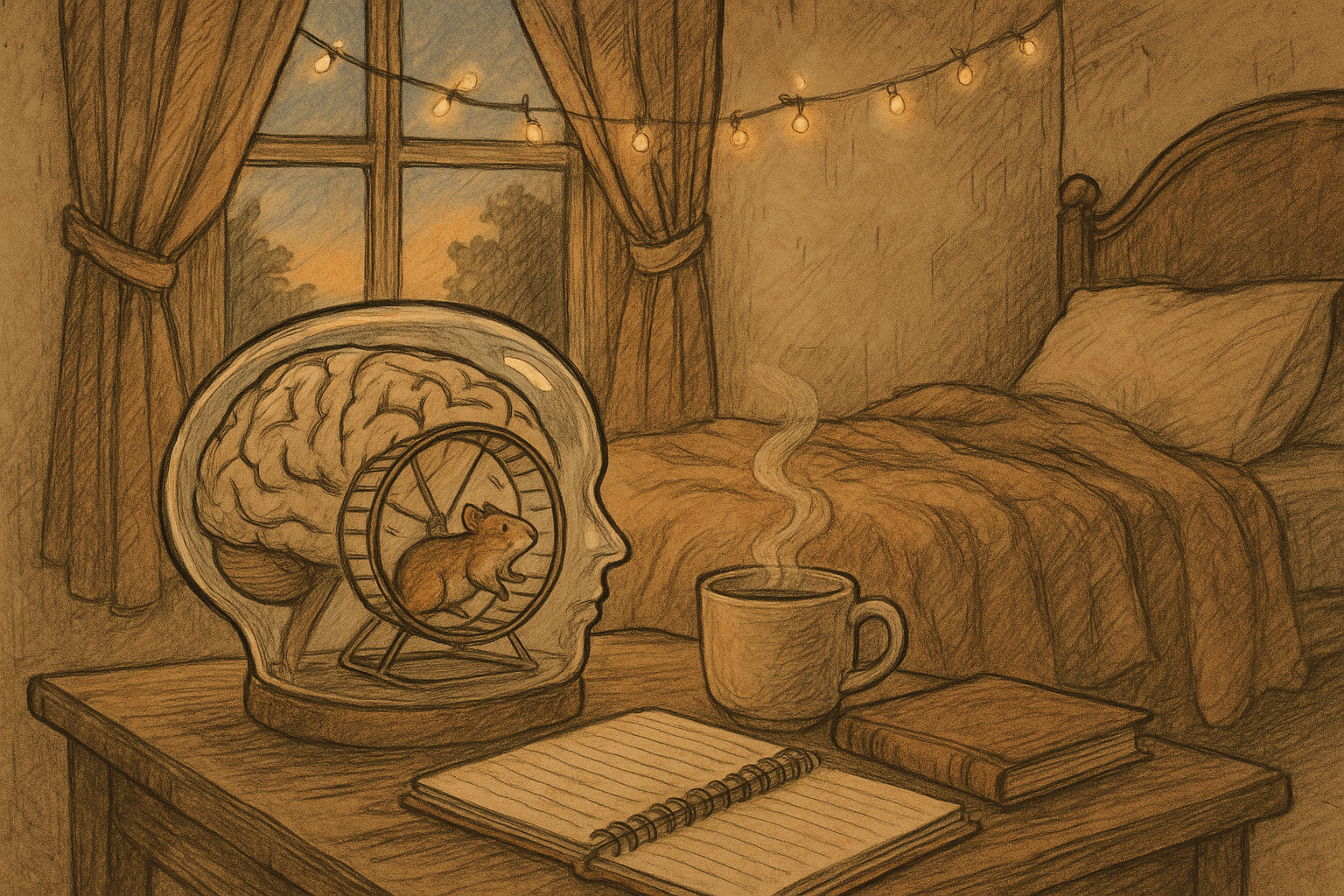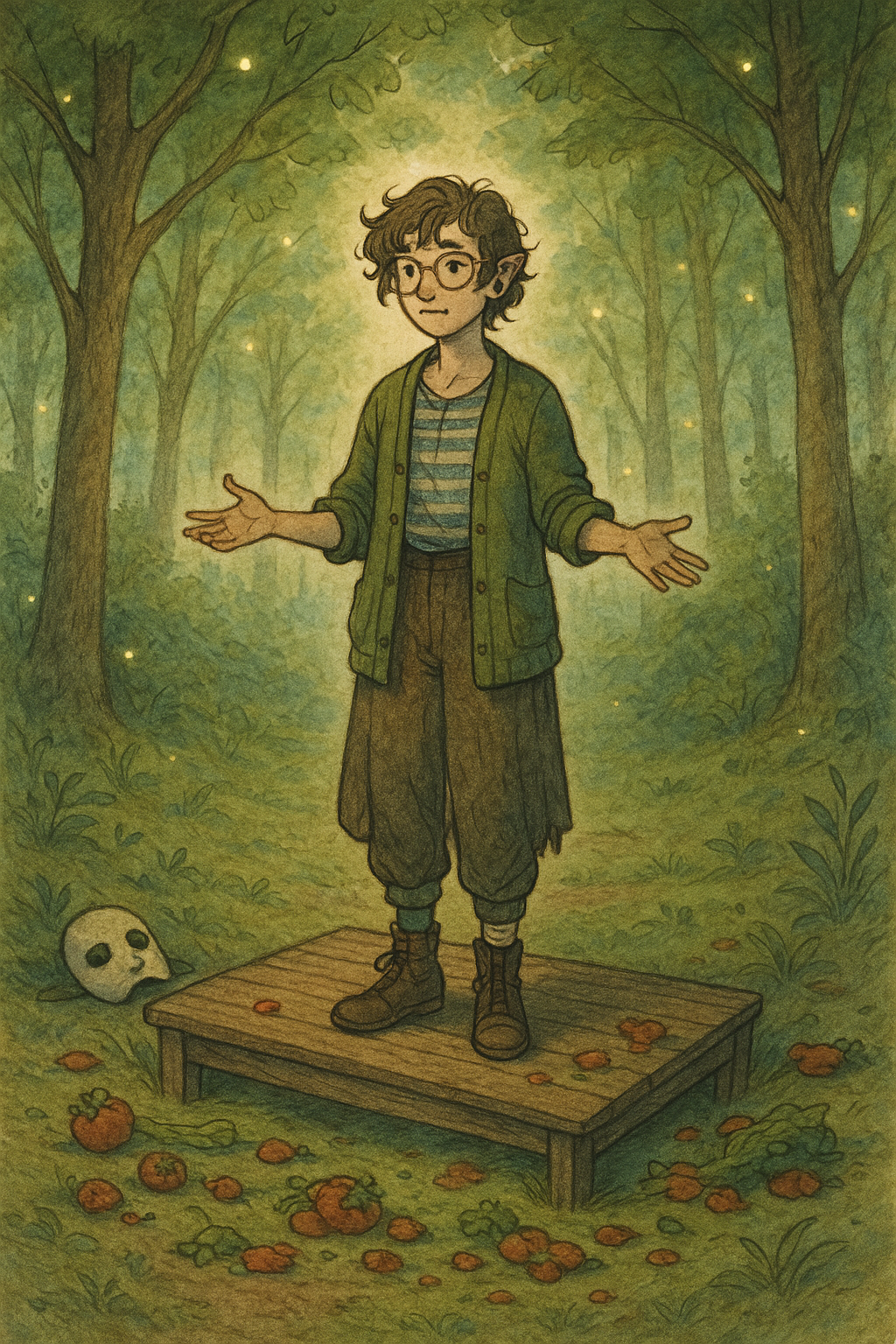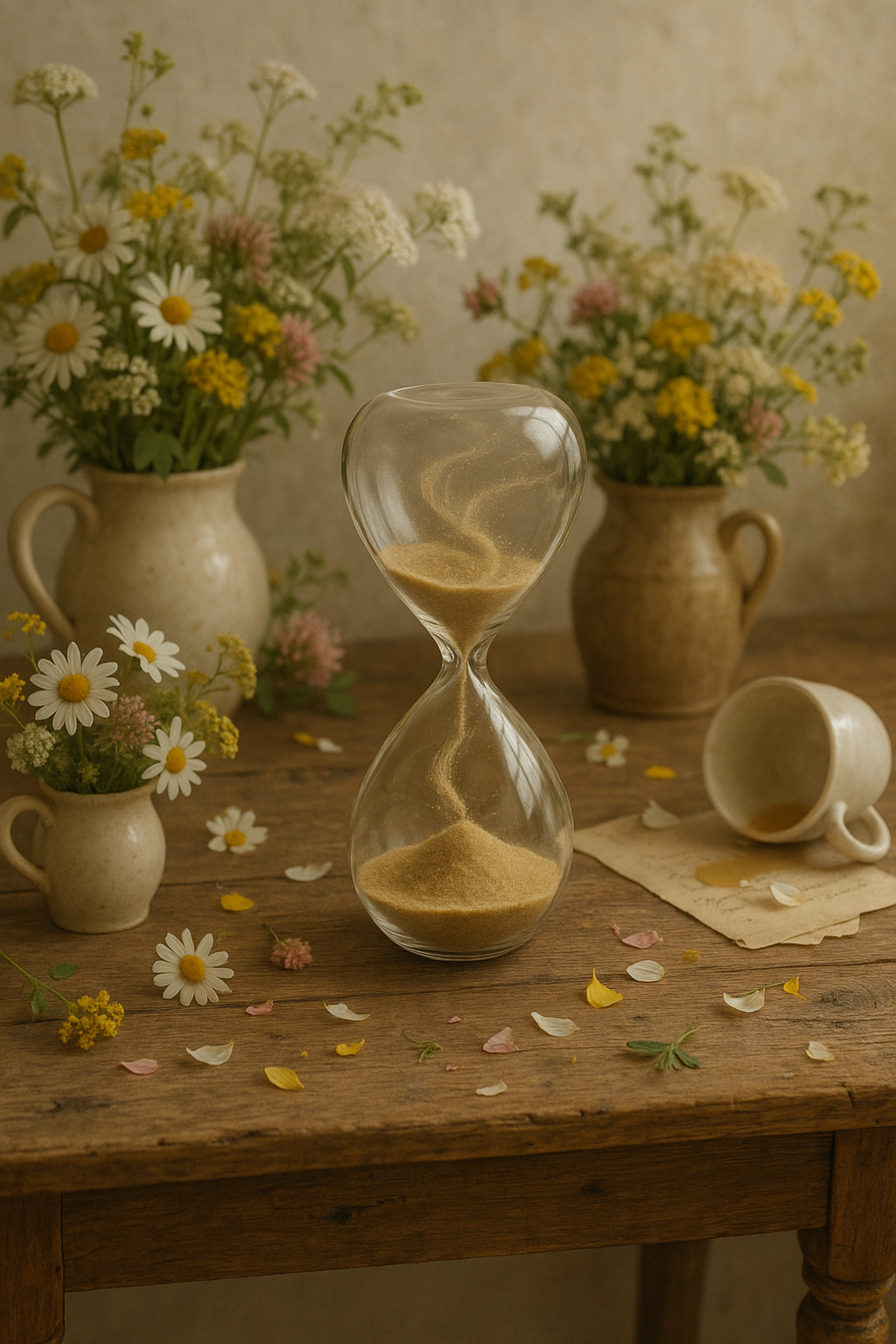How my tools for Bipolar II pull double duty with ADHD
I live with Bipolar Type II. For me, that means I live with a lower-than-average baseline mood, but I don’t tip into full-blown mania. Hypomania? Yes. But not the grandiose, no-sleep-for-days kind of mania you might associate with Bipolar I.
What that ends up looking like in practice is a consistent pattern I’ve tracked since high school: three distinct “down” months a year. Every year. Like clockwork.
- Mid-June to mid-July
- Mid-October to mid-November
- Mid-February to mid-March
They don’t line up with the solstices or equinoxes. They’re not quite seasonal affective episodes. They’re just mine. That’s something I want to say clearly up front: these are my patterns. This is my experience. Everyone’s neurospicy experience looks a little different, and that’s completely valid.
Over time, I’ve developed a set of tools that help me stay afloat. Some are structured. Some are spiritual. Some are silly. And as I’ve unpacked my overlapping neurospicy layers (hi, ADHD), I’ve noticed that a lot of the strategies that help me manage Bipolar also help with ADHD.
So here’s a breakdown of what’s in my kit—and how each tool does double-duty.
Introspection & Self-Awareness
This is where it all starts. If I don’t know where I’m at, I can’t make good choices. Whether it’s mood tracking, journaling, or just a gut check in the mirror, that moment of “ohhh, that’s what’s going on” makes everything else possible.
- Bipolar: Catching a swing early makes it easier to soften the landing.
- ADHD: Recognizing when my brain is foggy, restless, or overstimulated helps me plan accordingly.
Shared bonus: It’s a lot easier to be kind to myself when I understand the why behind the weird.
Self-Regulation (a.k.a. The Pause Button)
This is where I try not to let my brain drive the bus off a cliff. It’s deep breathing, intentional transitions, or even just saying out loud: “Okay, we’re spiraling. What would future-me appreciate right now?”
- Bipolar: Slows down the emotional momentum before it takes over.
- ADHD: Helps with impulse control and mood reactivity, especially when I feel like a squirrel on espresso.
Pattern Observation
This one was a game-changer. I started noticing not just how I felt, but when and why. I keep loose track of energy cycles, sleep, motivation, irritability—all of it. Eventually, I could see the waves coming.
- Bipolar: It’s how I figured out the three depressive months. Mapping cycles gave me a sense of predictability.
- ADHD: It helps me catch patterns in productivity and overstimulation. I can recognize burnout rhythms, focus bursts, and sensory overload cycles.
Knowing my own rhythms helps me stop blaming myself when I’m just out of phase. Naming a pattern lets me work with it instead of resenting it.
Self-Compassion
This one took time. Some days I can climb mountains. Other days I need a nap and a coloring book. That’s just how it is. Learning to stop fighting that—and stop judging myself for it—took work, but it’s been one of the most important tools I’ve ever picked up. Letting myself have bad days without spiraling into shame was hard—but worth it.
- Bipolar: Helps with shame spirals after hypomanic overcommitting or depressive crashes.
- ADHD: Eases the guilt of forgotten deadlines, lost keys, or “what was I doing again?” moments. Or going down an internet rabbit hole and asking myself hours later, “What Was I Looking For?”, aka wilfing. This softens the blow of inconsistency or whelm, let alone overwhelm.
Self-compassion isn’t an indulgence. It’s a survival tool.
Perspective-Taking (“It Could Be Worse”…Gently)
Sometimes, when things feel bleak, it helps to name what’s not going wrong. “At least I’m not barefoot in a Walmart at 3 a.m.” Or “At least the printer didn’t catch fire this time.” One of my favorite stories is “It Could Always Be Worse” by Margot Zemach (not an affiliate link).
- Bipolar: Gives a bit of humor and breathing room when everything feels awful.
- ADHD: Deflates the “my world is ending because I lost my sock” moment.
The key is doing it with kindness, not as a self-scold. Not dismissive. Not sarcastic. Just… gentle.
Non-Dwelling / Letting Go
This one took a long time. I used to think I needed to solve every feeling, pin it down, and analyze it to death. But then I realized… sometimes you just need to let it pass.
One day, while driving, it clicked: you have to notice things on the road, but you can’t focus on any one thing too long or you’ll crash. Same thing with thoughts.
- Bipolar: Stops me from spiraling into overanalysis during mood dips.
- ADHD: Keeps me from hyperfocusing on shame, conflict, or that awkward thing I said five years ago.
Creativity & Creation
I need to make things. If I don’t, I get cranky, distracted, and disoriented. Whether it’s photography, weaving, drawing, game design, or writing filk, it’s not a luxury—it’s a need.
- Bipolar: Creative acts help me channel energy and regulate emotions.
- ADHD: They give me novelty, dopamine, engagement, flow, and purpose.
When I ignore the muse, she kicks down the door and won’t let me rest until I’ve made something.
Creativity isn’t optional. It’s regulation.
Self-Care (Sometimes It’s Ice Cream)
I try to listen to what I actually need in the moment. Maybe it’s a nap. Maybe it’s a walk. Sometimes it’s long baths, herbal tea, and early bedtimes. Other times it’s a pint of Ben & Jerry’s and three episodes of my comfort show.
- Bipolar: A small act of comfort can soften a low-energy day.
- ADHD: Treats and sensory comforts help me regulate after masking, overstimulation, or meltdowns.
The trick is listening to what I actually need—not what I think I “should” need. And definitely not guilt.
Reading = Regulation
Reading helps me feel like myself. It’s grounding, it’s absorbing, and it quiets the noise in my head.
- Bipolar: Reading pulls me out of the fog and into someone else’s story.
- ADHD: Hyperfocus mode, activated—but in a good way.
Plus, I can tailor what I read based on what my brain needs: comfort, challenge, escape, or calm.
Learning New Things
When I’m learning, I feel alive. It gives me structure, curiosity, and a goal to aim at—even if I don’t finish the course or project.
- Bipolar: Keeps the mind moving without letting it spiral into overactivity.
- ADHD: Feeds my craving for novelty and dopamine in a structured outlet.
I’m always juggling ten projects. And you know what? That’s okay.
Listening to My Body
I used to ignore my body. Now, I try to listen. When I’m tired, hungry, tense, or overstimulated, that’s information. I’ve learned to notice before it turns into a crisis. I don’t always succeed; it’s a process, but I do much better than I did.
- Bipolar: Physical symptoms or sleep changes are often the first warning sign of a mood shift.
- ADHD: My body often knows I’m overwhelmed before my brain catches up.
The more I respect my limits, the more I can actually stretch them when I need to.
Flexible Structure
Rigid schedules never worked for me. I used to think structure was the enemy. Now I see it as scaffolding—something that holds me up just enough without boxing me in.
- Bipolar: Prevents chaos while still allowing space for how I feel.
- ADHD: Gives gentle rails so I don’t derail.
My version of structure might look like “use a timer but pick the task intuitively” or “make a plan, but forgive myself when I need to pivot.” Body doubling, check-ins, and routines with options—those are my scaffolding.
It’s not about perfection. It’s about function.
Closing Thoughts
Living with both Bipolar II and ADHD is a daily dance. Some days I lead. Some days I just try not to trip over my own feet.
This is what works for me. These are the tools that help me balance Bipolar II and ADHD—tools I’ve picked up, dropped, refined, and rediscovered over the years. These tools—imperfect, evolving, often surprising—help me navigate it all with a little more grace, humor, and compassion.
Your brain, your patterns, and your needs may look different. That’s the whole point. There’s no universal manual for the neurospicy life. But maybe seeing my toolkit will spark something for yours.
If you’re neurospicy like me, I hope something here inspires an idea for your own toolkit. We don’t all need the same tools—but we do deserve to find what works for our beautifully chaotic brains.
If you’ve got your own ways of managing mood swings or squirrel brain, I’d love to hear them. Let’s keep sharing what helps.




